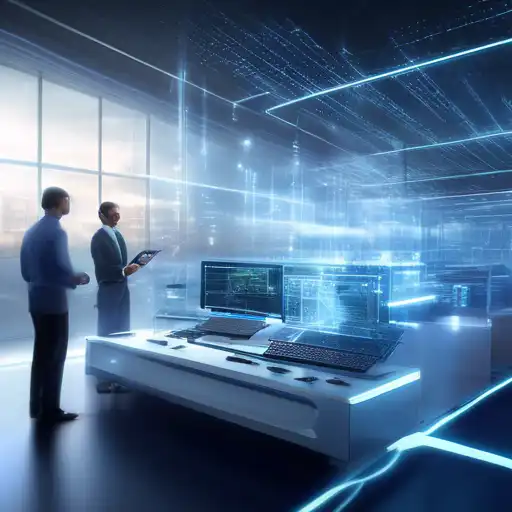What is Edge Computing?
Edge computing is a transformative technology that processes data closer to where it is generated, rather than relying on a centralized data-processing warehouse. This approach significantly reduces latency, enhances speed, and improves the efficiency of data processing for businesses and consumers alike.
The Benefits of Edge Computing
By bringing computation and data storage closer to the devices where it's being gathered, edge computing allows for faster data processing and real-time analytics. This is particularly beneficial for Internet of Things (IoT) devices, which rely on quick data processing to function effectively.
- Reduced Latency: Data doesn't have to travel as far, which means faster response times.
- Bandwidth Savings: Processing data locally reduces the amount of data that needs to be sent to the cloud, saving bandwidth.
- Improved Security: By keeping sensitive data closer to its source, edge computing can enhance data privacy and security.
Edge Computing vs. Cloud Computing
While cloud computing has been the backbone of data processing for years, edge computing offers a complementary approach. Cloud computing centralizes data processing in large data centers, whereas edge computing distributes processing across local devices. This doesn't mean one will replace the other; instead, they work together to provide more efficient data processing solutions.
Real-World Applications of Edge Computing
Edge computing is already making waves across various industries. From smart cities that use sensors to monitor traffic and reduce congestion, to healthcare devices that provide real-time patient monitoring, the applications are vast and varied.
- Smart Manufacturing: Edge computing enables real-time monitoring and automation in factories.
- Autonomous Vehicles: Self-driving cars process vast amounts of data locally to make split-second decisions.
- Retail: Personalized shopping experiences are created by analyzing customer data on the spot.
Challenges and Considerations
Despite its benefits, edge computing comes with its own set of challenges. These include the need for robust security measures at the edge, the complexity of managing distributed systems, and the initial cost of setting up edge computing infrastructure.
The Future of Edge Computing
As the demand for real-time data processing grows, so does the potential for edge computing. With advancements in 5G technology, the capabilities of edge computing are expected to expand, offering even faster speeds and more reliable connections for devices around the globe.
Edge computing represents a significant shift in how data is processed and analyzed. By bringing computation closer to the source of data, it offers a faster, more efficient alternative to traditional cloud computing models. As technology continues to evolve, the role of edge computing in shaping the future of data processing cannot be underestimated.
